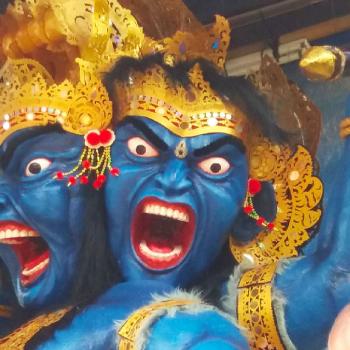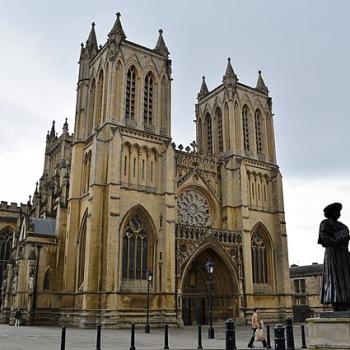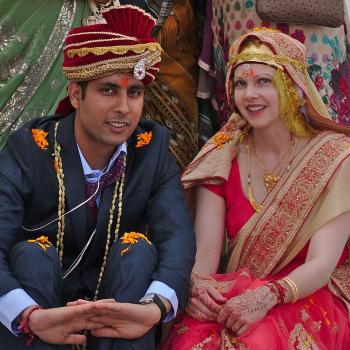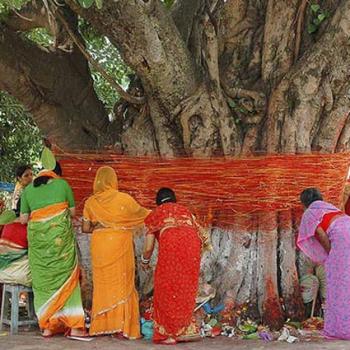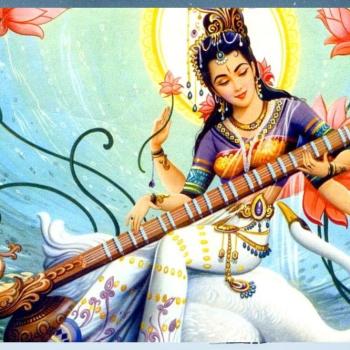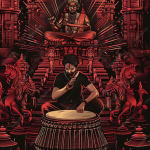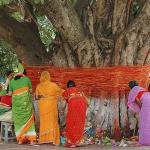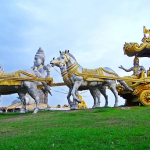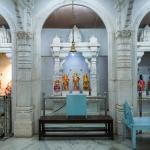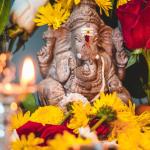
Hindus just completed their most popular festival Diwali, which is fast becoming a staple of mainstream America. The conclusion of the five-day festival mostly marks the end of a long season of festivity for most Hindus, except for those who hail from the India’s eastern belt comprising of states like Bihar, Jharkhand, Uttar Pradesh, parts of Nepal and surrounding areas. For these communities, the sixth day after Diwali is celebrated as Chhath and on a scale that rivals Diwali for piety and grandeur.
The four-day long festival is dedicated to the Sun and to ‘Chhathi Maiya’ (the Goddess Shashti or Usha-harbinger of dawn). It includes a unique ceremony on the evening of day three, where worshippers gather to pay homage to the setting sun (the Sandhya Arghya) followed by morning prayers to the rising sun the next morning (known as Usha Arghya. The worship of the setting sun in quite unique since normally such veneration is reserved for the rising sun only. It is believed that Pratyusha (the last rays of the evening)and Usha (the first rays of the morning) are especially beneficial, particularly at this time of the year. The entire festival carries forward the ancient Hindu reverence for the Sun – the prime source of energy that sustains all lives on the Earth.  Many believe this also symbolizes universal truth that dusk must be followed by dawn and thus that the fading sun will shine again with greater glory. Some see in this a reflection of deeper Hindu philosophy that sees the ups and down of life as inevitable and honors all phases of the cycles of life.
Many believe this also symbolizes universal truth that dusk must be followed by dawn and thus that the fading sun will shine again with greater glory. Some see in this a reflection of deeper Hindu philosophy that sees the ups and down of life as inevitable and honors all phases of the cycles of life.
Water is an essential element of the worship. Thus, crowds of devotees make a beeline for the rivers, and other water bodies. Chhath on the banks of the river Ganga is an experience in itself. But for those who do not live near rivers or lakes a small pond or bucket of water will do. During Chhath, the riverbanks are tightly packed with worshippers making their way down to the water, amid the smell of incense, the sticks of sugarcane and flat woven baskets laden with prasad and ritual offerings –all jostling for space.
Getting Ready to Celebrate
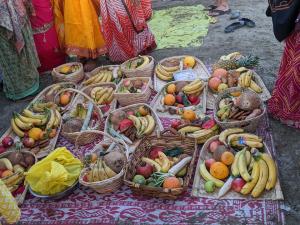 The preparation for Chhath and observing its strict rules means that often only one member in a household actually observes the fasts and does the puja, with assistance from the rest of the family. The strictest hygiene must be maintained at all times in the entire house where someone is observing chhath. In some houses it is customary to avoid cooking any meat a whole fortnight before the festival.
The preparation for Chhath and observing its strict rules means that often only one member in a household actually observes the fasts and does the puja, with assistance from the rest of the family. The strictest hygiene must be maintained at all times in the entire house where someone is observing chhath. In some houses it is customary to avoid cooking any meat a whole fortnight before the festival.
Nothing symbolizes the taste of Chhath more than “thekua’ a beloved homemade sweet combining whole wheat flour, jaggery and ghee. It is the most popular Prasad (ritualistic food offered to the deities and then distributed among all) from the festival. Its preparation is specially complicated in traditional houses, where it begins with procuring and washing the actual wheat grains that are washed and then dried under the sun, while being watched constantly to ensure no bird or other animals touch it. It’s then ground into flour and all cooking is done in a room specially set aside for the purpose. The person doing the Chhath puja lives by a strict code for a few days before and during the festival, eating only prescribed simple food and quite often fasting with no water or food altogether. It is believed that any impropriety in the observance of these customs and processes, would nullify the entire fast and puja.
A Feast for the Senses
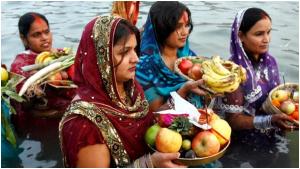 On the day of Chhath, the entire clan sets out for the river singing special devotional songs. Chhath music is a genre by itself in Indian states like Bihar and UP. The worshippers carry coconuts, sweets-including the thekua and fresh fruits in colorfully decorated baskets, coconuts and sticks of fresh sugarcane. A few devotees may even undertake to reach the water walking on their knees. The puja or worship rituals are conducted standing motionless in the water, holding the flat cane basket heaped with puja materials and praying till the time for the sunset and sunrise. Thereafter they offer water to the sun and lighted diyas afloat on the water. The sight of hundreds of small clay lamps filled with oil or ghee and carrying a small flickering flame, bobbing on the water is something to remember for forever.
On the day of Chhath, the entire clan sets out for the river singing special devotional songs. Chhath music is a genre by itself in Indian states like Bihar and UP. The worshippers carry coconuts, sweets-including the thekua and fresh fruits in colorfully decorated baskets, coconuts and sticks of fresh sugarcane. A few devotees may even undertake to reach the water walking on their knees. The puja or worship rituals are conducted standing motionless in the water, holding the flat cane basket heaped with puja materials and praying till the time for the sunset and sunrise. Thereafter they offer water to the sun and lighted diyas afloat on the water. The sight of hundreds of small clay lamps filled with oil or ghee and carrying a small flickering flame, bobbing on the water is something to remember for forever.
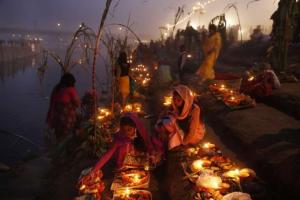 On the last day of Chhath, devotees stand in the cold water (often for hours) awaiting the appearance of the sun over the horizon, to complete the puja, and finally break their fast. There is a feeling of immense jubilation because the successful completion of the Chhath fast and puja is believed to confer enormous merit on the entire family.
On the last day of Chhath, devotees stand in the cold water (often for hours) awaiting the appearance of the sun over the horizon, to complete the puja, and finally break their fast. There is a feeling of immense jubilation because the successful completion of the Chhath fast and puja is believed to confer enormous merit on the entire family.
Over the years Chhath celebrations have grown in scale and grandeur in many cities like Patna and Delhi, where hundreds of thousands gather along the sacred river banks dressed in their festive best, creating a mini carnival like atmosphere, marked with devotional songs, vendors hawking goods and children bursting firecrackers. Yet the underlying sanctity of the occasion remains intact.
The Many Legends of Chhath
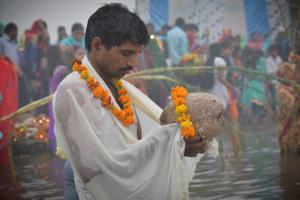 Tracing its roots back to Vedic times, Chhath like most Hindu festivals, also incorporates multiple stories about its origin. Certainly, the tradition of worshipping the sun has an old and storied history in Hinduism, as is the tradition of worshipping female divinities. During this festival. devotees pray to Chhaathi maiya, a form of Devi Usha, the goddess of dawn.
Tracing its roots back to Vedic times, Chhath like most Hindu festivals, also incorporates multiple stories about its origin. Certainly, the tradition of worshipping the sun has an old and storied history in Hinduism, as is the tradition of worshipping female divinities. During this festival. devotees pray to Chhaathi maiya, a form of Devi Usha, the goddess of dawn.
Some attribute its popularity to the divine couple of Rama and Sita, who fasted and worshipped the Sun after their return to their kingdom from a long 14-year exile. Devi Sita hails from an area called Mithila-which in the modern world is part of the state of Bihar. Coincidentally it is in these areas closest to Mithila, is where Chhath is celebrated with the greatest fervor.
Another legend attributes Chhath’s popularity to Karna, one of the ill-fated heroes of the epic Mahabharat, whose kingdom Anga Desh falls in modern day Bihar, and who was known for his devout worship of the sun. Many other stories in Hindu epics refer to sages, kings and commoners alike praying to the sun on the occasion of Chhath (and other times) showing an unbroken chain of reverence for the source of all life on the planet.




